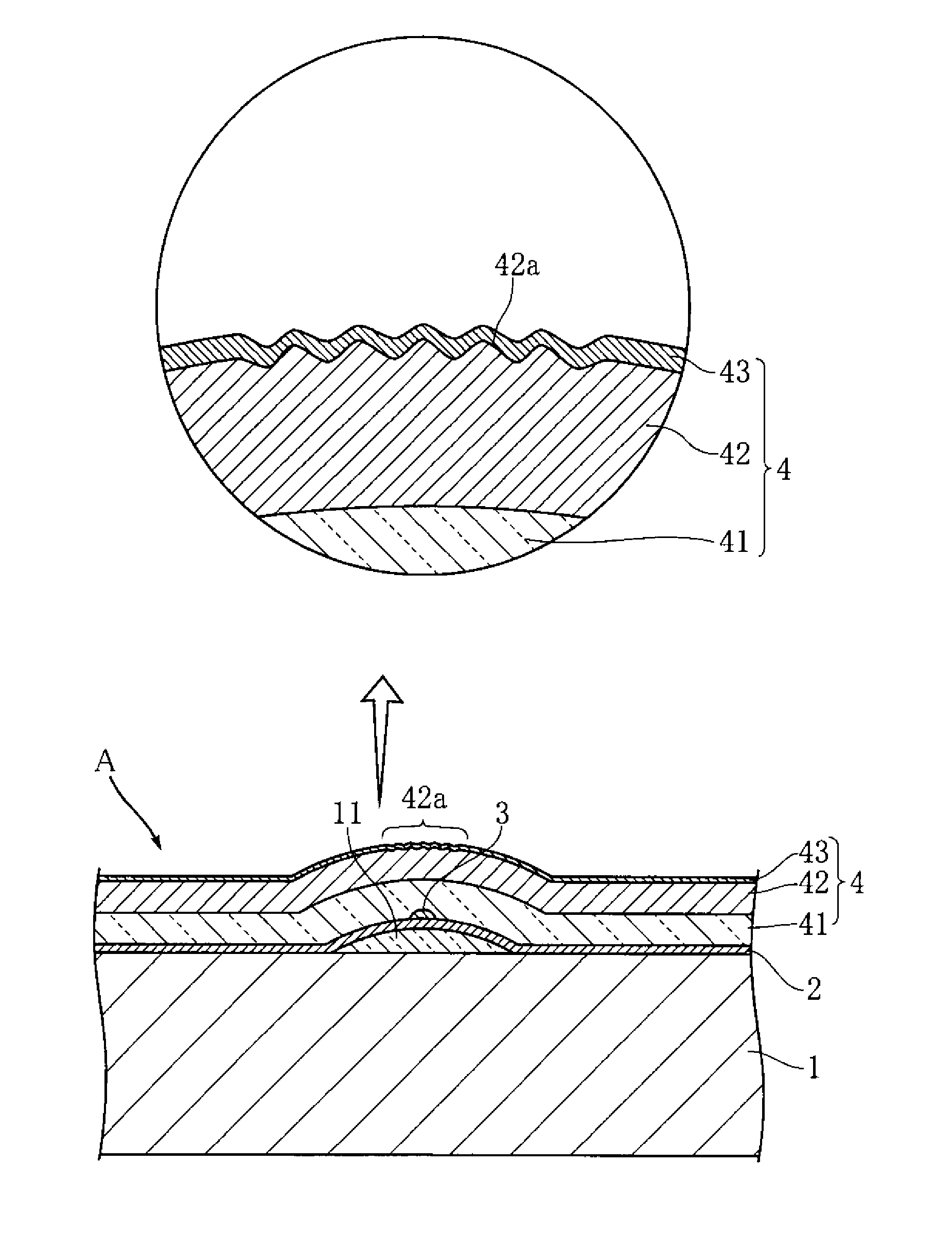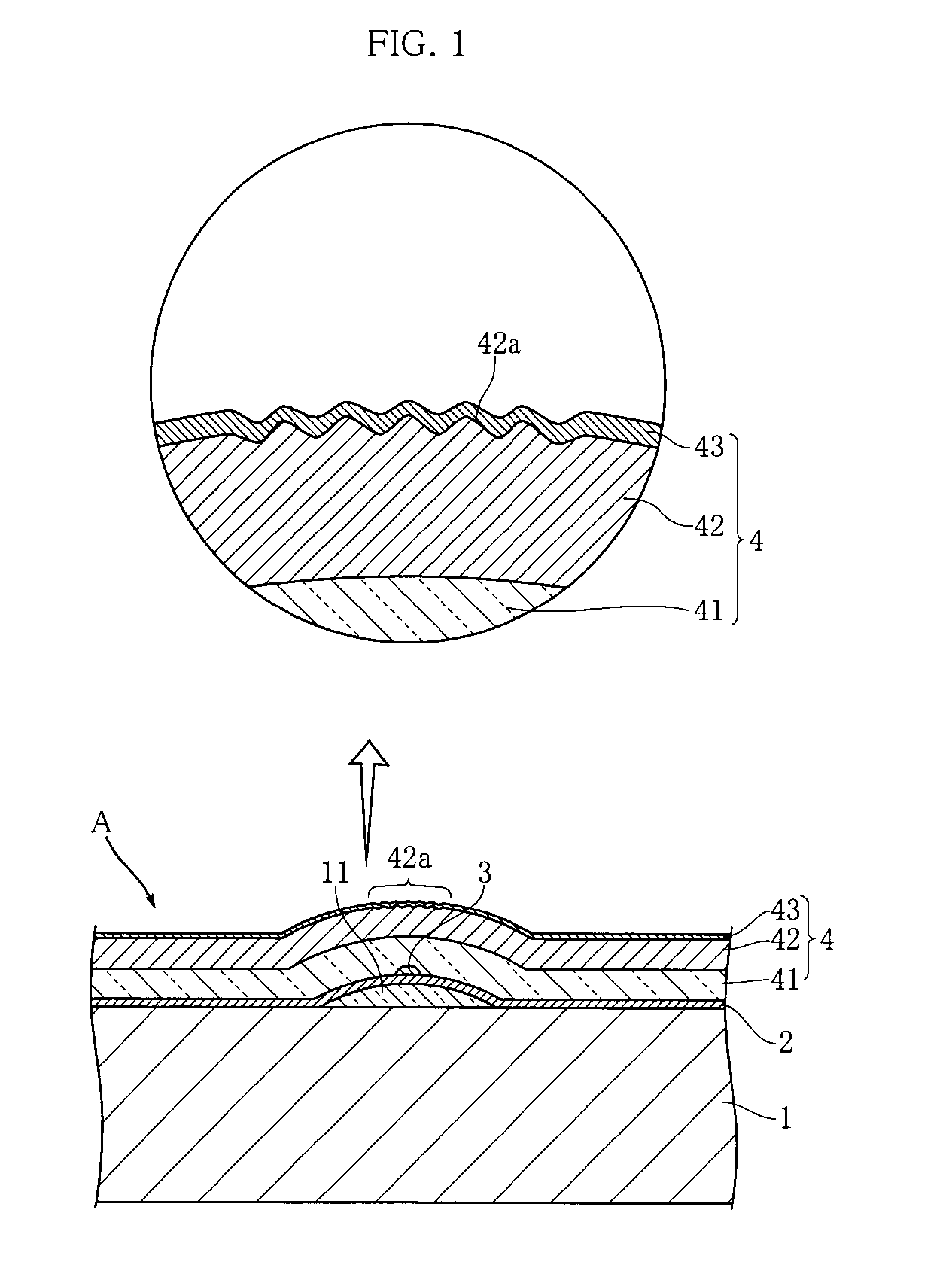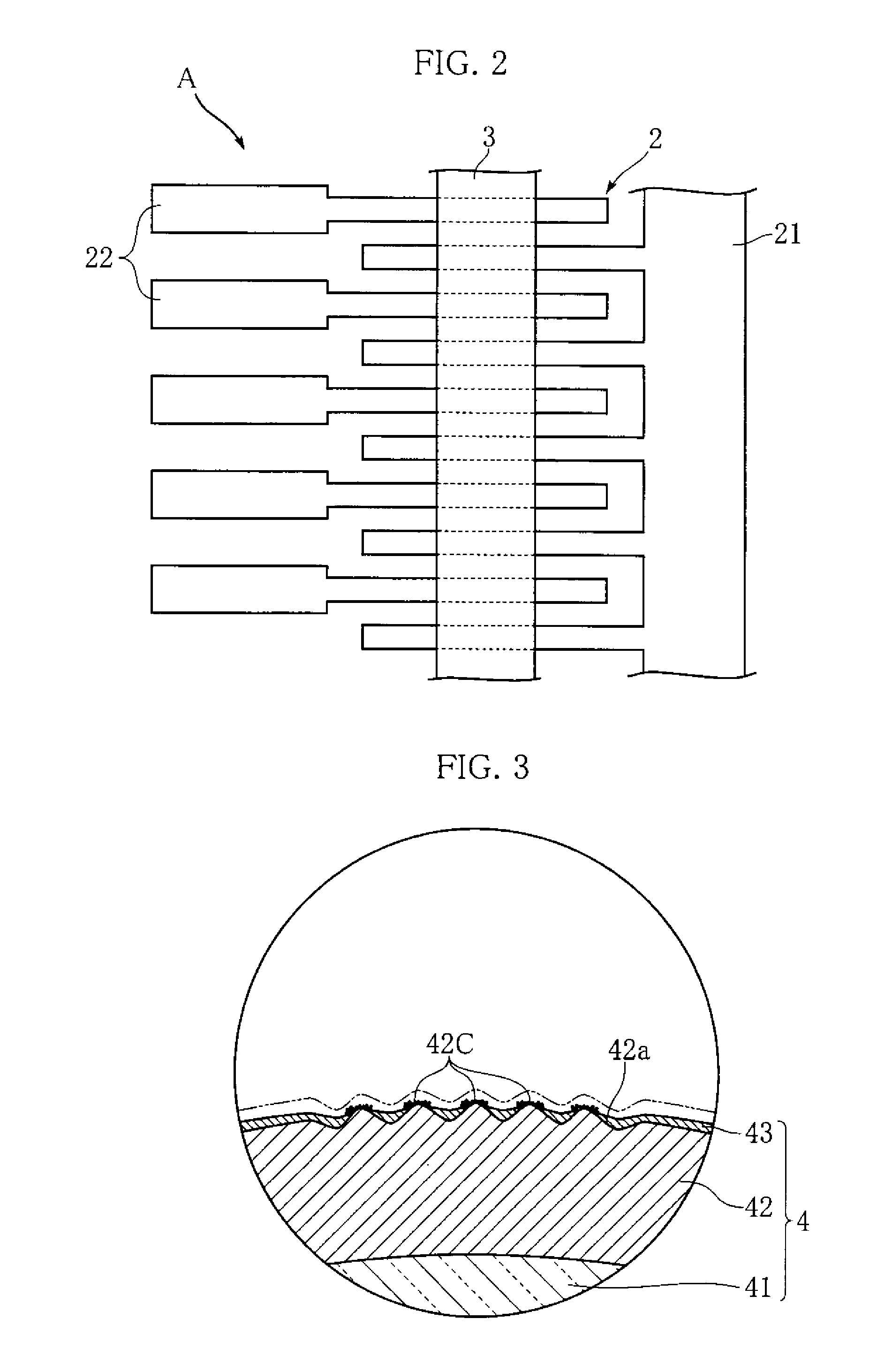Thermal print head
a printing head and thermal technology, applied in printing and other directions, can solve the problem of exposed inner layer, and achieve the effect of inhibiting the occurrence of sticking phenomenon
- Summary
- Abstract
- Description
- Claims
- Application Information
AI Technical Summary
Benefits of technology
Problems solved by technology
Method used
Image
Examples
Embodiment Construction
[0014]FIG. 1 and FIG. 2 show an example of a thermal print head according to the present invention. The illustrated thermal print head A includes a substrate 1, an electrode pattern 2, a heat generating resistor 3 and a protective layer 4. Only the electrode pattern 2 and the heat generating resistor 3 are depicted in FIG. 2 for easier understanding.
[0015]The substrate 1 is an insulated substrate in the shape of an elongate rectangle in a plan view extending in a primary scanning direction, and is made of an alumina ceramic, for example. As shown in FIG. 1, a partial glaze 11 is formed at the upper surface of the substrate 1. The partial glaze 11 is in the shape of an elongate strip extending in the primary scanning direction. The cross section of the partial glaze 11 bulges toward the thickness direction of the substrate 1 (upward in FIG. 1).
[0016]The electrode pattern 2 is for applying current to the heat generating resistor 3, and includes a common electrode 21 and a plurality of...
PUM
 Login to View More
Login to View More Abstract
Description
Claims
Application Information
 Login to View More
Login to View More - R&D
- Intellectual Property
- Life Sciences
- Materials
- Tech Scout
- Unparalleled Data Quality
- Higher Quality Content
- 60% Fewer Hallucinations
Browse by: Latest US Patents, China's latest patents, Technical Efficacy Thesaurus, Application Domain, Technology Topic, Popular Technical Reports.
© 2025 PatSnap. All rights reserved.Legal|Privacy policy|Modern Slavery Act Transparency Statement|Sitemap|About US| Contact US: help@patsnap.com



